ClarkVision.com
| Home | Galleries | Articles | Reviews | Best Gear | Science | New | About | Contact |
Blue Lions on the Serengeti and Natural Colors of the Night Sky
by Roger N. Clark
| Home | Galleries | Articles | Reviews | Best Gear | Science | New | About | Contact |
by Roger N. Clark
Blue Milky Way images we so commonly see on the internet are as real as blue lions on the Serengeti. Actually, the color of the Milky Way is similar to the reddish-brown/tan of lions on the Serengeti, and just like blue lions on the Serengeti are far from natural color, blue Milky Way images are far from natural color..
The Night Photography Series:
Contents
Introduction
Color Definitions
Natural Color of Stars, Nebulae and Other Objects in the Night Sky
How to Get Natural Color in Night Sky Images
Blue Milky Way images are common on the internet today. It is a fad started circa 2008. But a blue Milky Way color is as far from reality as blue lions on the Serengeti. A blue Milky Way image has shifted reds, oranges, yellows and greens that are common in the night sky to blue. It comes from a post processing idea that came about by using white balance to "reduce" light pollution, but white balance only changes the color of the light pollution, and changes the color of other things in the night sky. Another method used histogram equalization or alignment to reduce light pollution, but again shifts colors of everything else in the night sky. This articles shows some of the effects and what the natural colors really are. The night sky is much more interesting than blue and white stars on a blue background.

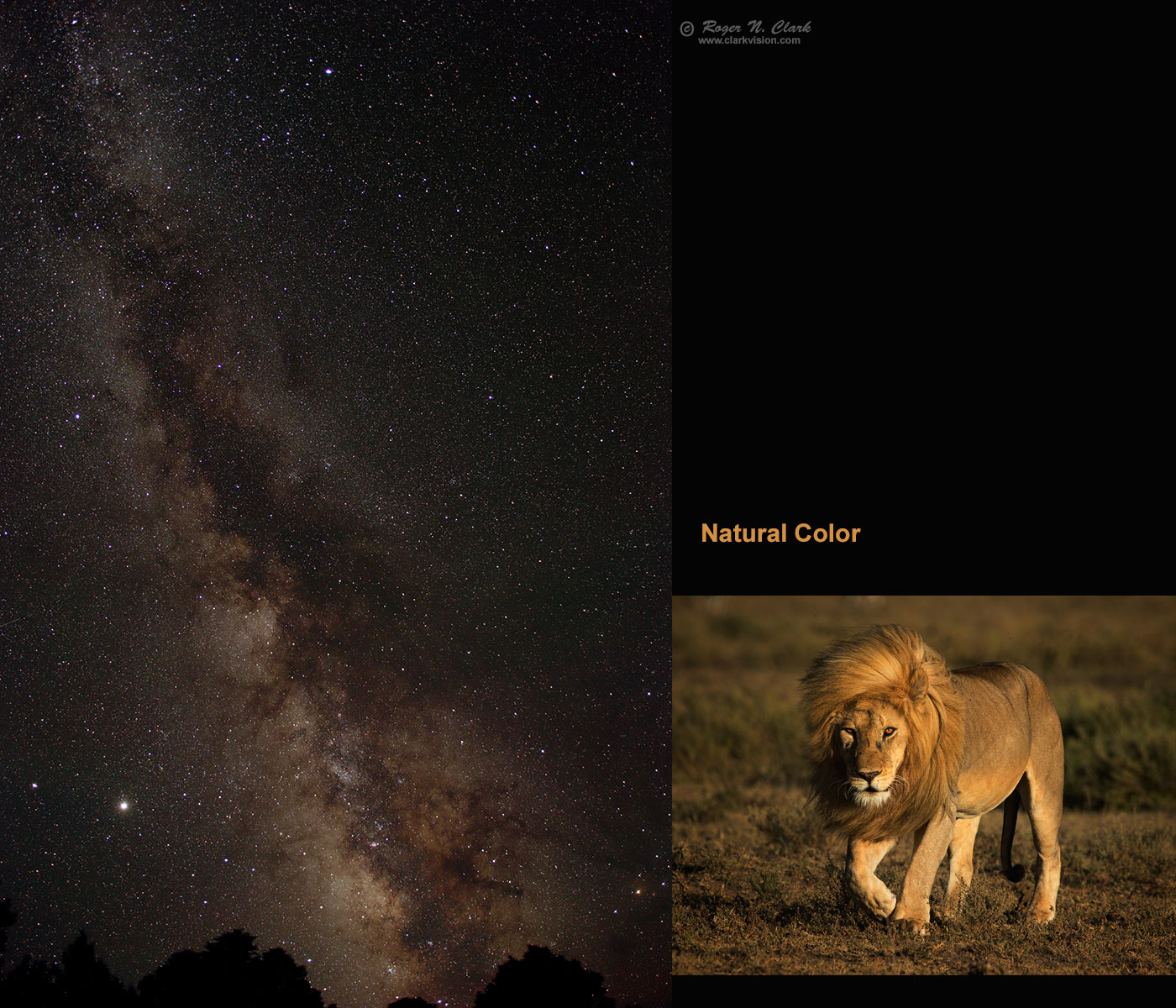
True Color. Color and contrast as close as possible to the human visual system. The wavelengths recorded match that of the human eye.
Natural Color. What most film and digital camera daytime images are--color spectral response that is close to the human eye response, but may be different in contrast and saturation. The 3 colors can also be converted to black and white in various proportions to change contrast. The wavelengths recorded reasonably match that of the human eye. The images in Figure 2 are natural color.
Enhanced Color. "Extreme" or strong pushing of contrast and/or saturation. There is a continuum between natural color and enhanced color. A daytime landscape image is typically natural color that has been enhanced some. A portrait of a person is typically less enhanced. Fujichrome Velvia film might be considered enhanced color.
False Color. Includes color outside of the visual passband. For example False-color IR photography includes near infrared. Mid-infrared or ultraviolet imaging are also false color. It can also be black and white (e.g. image one wavelength outside the visual range). Most Hubble Telescope images and most images from professional observatories are False Color or Narrow Band Color. Most of my professional scientific work is false color and narrow band (most commonly narrow bands in the infrared).
Narrow Band Color. Use of narrow passbands to isolate particular properties, typically for imaging a specific composition. Narrow band can be entirely inside the visual range, outside the range, or both. Narrow band can also be black and white (e.g. an image at one wavelength).
All the above are legitimate imaging options. True color is the hardest to achieve, and is not actually possible with current technology with some unusual spectral content. It probably comes closest in portrait photography as people generally want accurate skin tones.
All forms of the above can make beautiful and stunning images.
There is one additional color scheme I'll define:
Variable Color Balance/Mangled Color. This is color balance that changes with scene intensity or a color balance so shifted that visible colors are radically shifted, like red to blue. And often we see extreme color balance combined with variable color balance with scene intensity. This is different than enhanced color, which may just boost saturation and contrast (e.g.bluer blues, redder reds). Variable color balance is common in Milky Way photography on the internet today. The images in Figure 1 are variable color balance/mangled color.
Contrast. Depending on conditions, we can perceive different contrast in a scene. For example, on a sunny day, the contrast is generally high. On a foggy day, contrast at the same location is generally low. At night, contrast in the night sky is variable depending on the level of light pollution, haze, and airglow (molecules emitting light high in the atmosphere having been excited by cosmic rays and from solar UV in the daytime). This haziness is collectively called skyglow. Sometimes the photographer's intent may be to remove some or all of this haziness, increasing contrast. Most of the skyglow has been subtracted and fainter nebulae and stars in the night sky boosted in brightness showing more detail and contrast. Such a view might be possible on a night with no light pollution, no haze, and extremely low airglow, as in Figure 2. The view would be even higher in contrast if the Earth had no atmosphere.
Stars display a variety of natural colors depending on their temperature and composition (Figure 3). These colors can be seen through modest sized amateur telescopes, or binoculars for the brighter stars, and some colors can be seen without optical aid. The composite shown in Figure 3 was derived from out-of-camera jpeg images of out-of-focus stars made with a stock digital camera. The color space is sRGB. De-focus the stars into small disks to help visually show the colors. Astronomers measure the stellar magnitudes of stars through different filters, commonly U, B, V, R (ultraviolet, blue, green, visible, and red) filters. The V filter is close to the green in a consumer digital camera. The blue filter includes blue of the visible spectrum plus some ultraviolet. The B-V index is an approximate indicator of color. Note the index is not an exact color indicator because of differing spectra of stars and the B and V filters are not an exact match to digital camera filters nor human eye spectral response. Note too that there are no green stars. Fewer than 1% of stars in our galaxy have blue natural color.

Stars in night sky images can show wonderful colors too if daylight white balance is used and the stars are not saturated. Figure 4 shows an example.
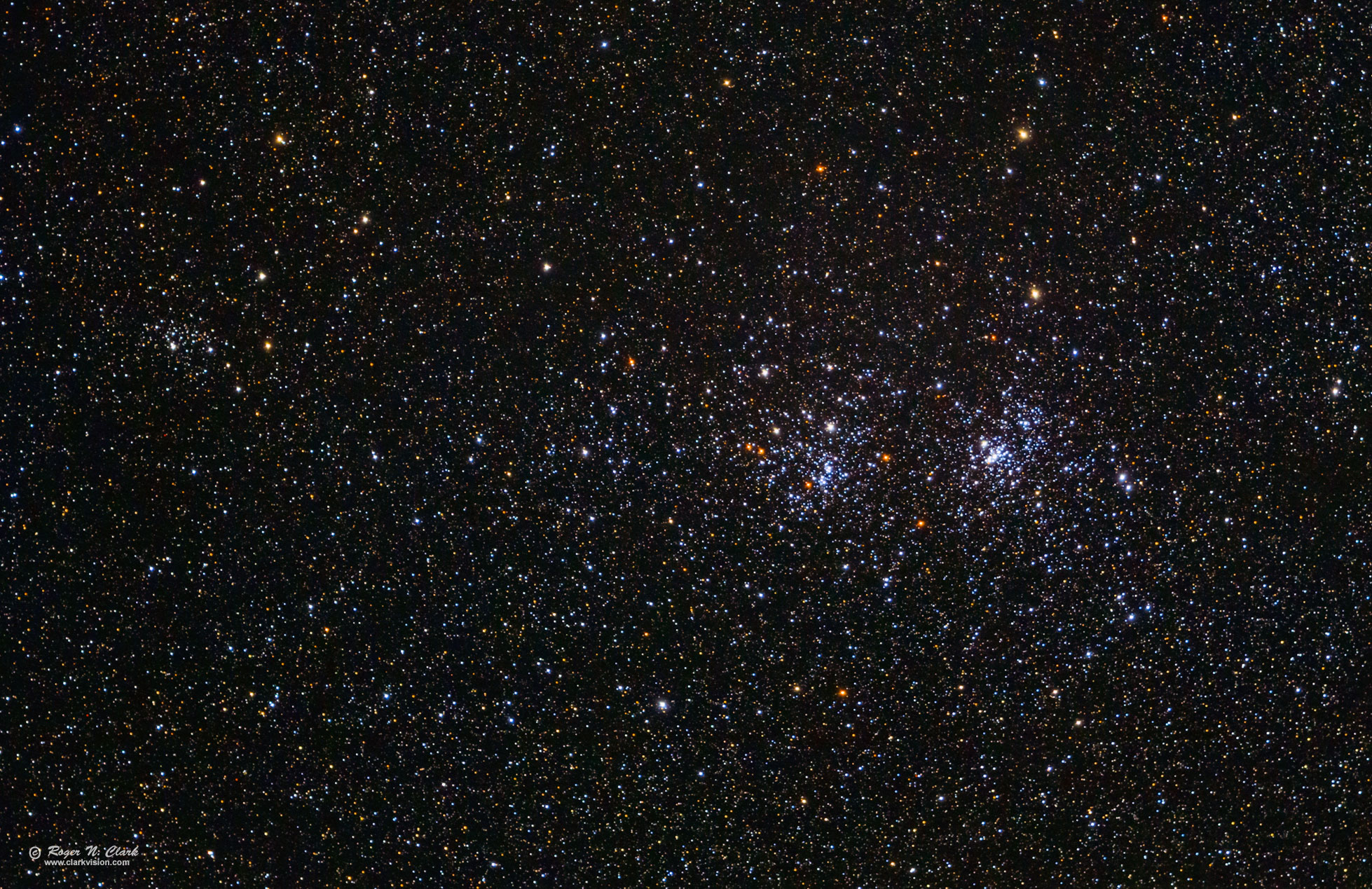
The Milky Way is best described as the color of lions on the Serengeti: reddish browns to yellow. As one zooms in to the Milky Way, these colors become more apparent, as seen in Figures 5 and 6. Sprinkled throughout the Milky Way are hydrogen emission nebulae that appear pink/magenta to red. Occasional blue shows up (Figure 6 and 7) when very fine grained dust or gas molecules scatter starlight in certain orientations (similar to why our daytime sky is blue--scattered sunlight off of molecules, e.g. nitrogen, oxygen).
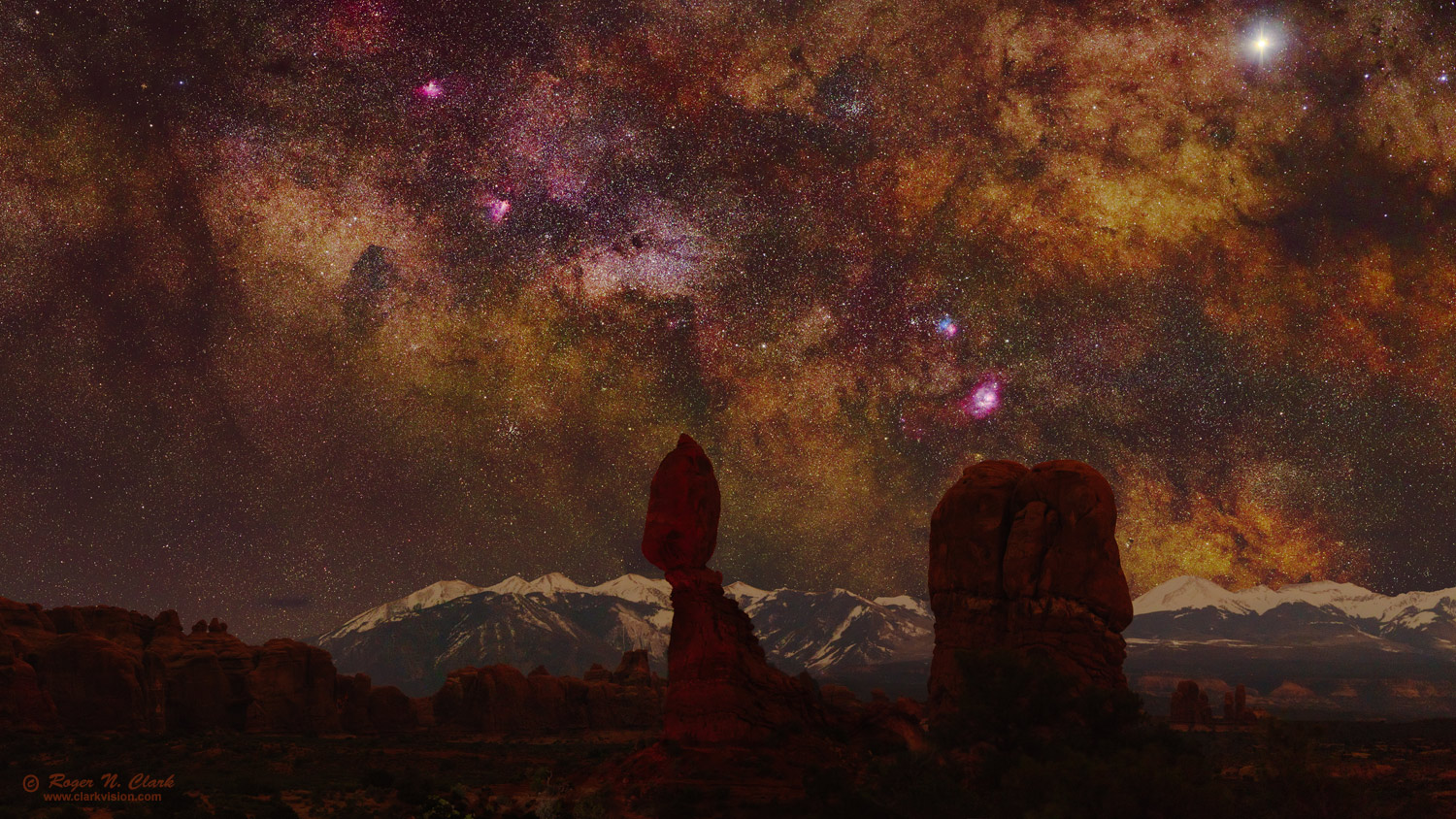
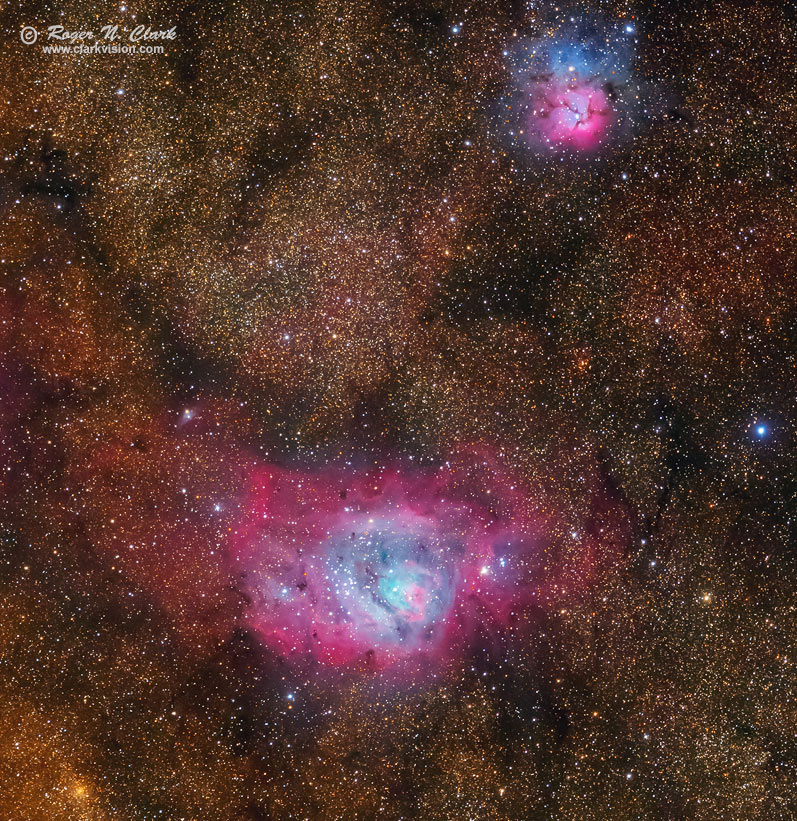
Comets commonly show a cyan-green head and meteors a green trail (Figure 7).

Away from the galactic center, the Milky Way does not turn blue like we see in so many Milky Wy images on the internet. The Milky Way remains reddish brown in color, with sprinkling of pink/magenta and red emission nebulae.
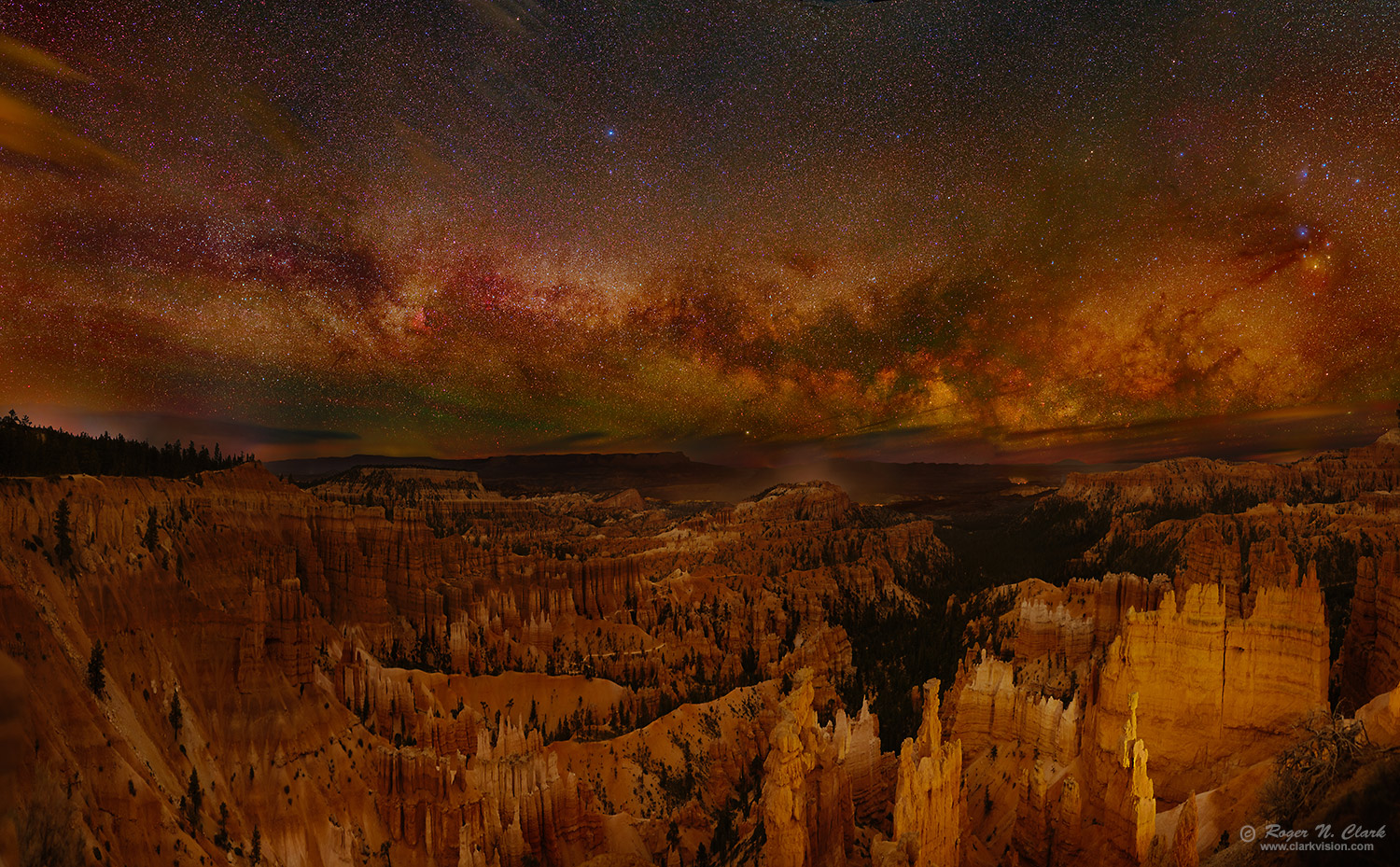
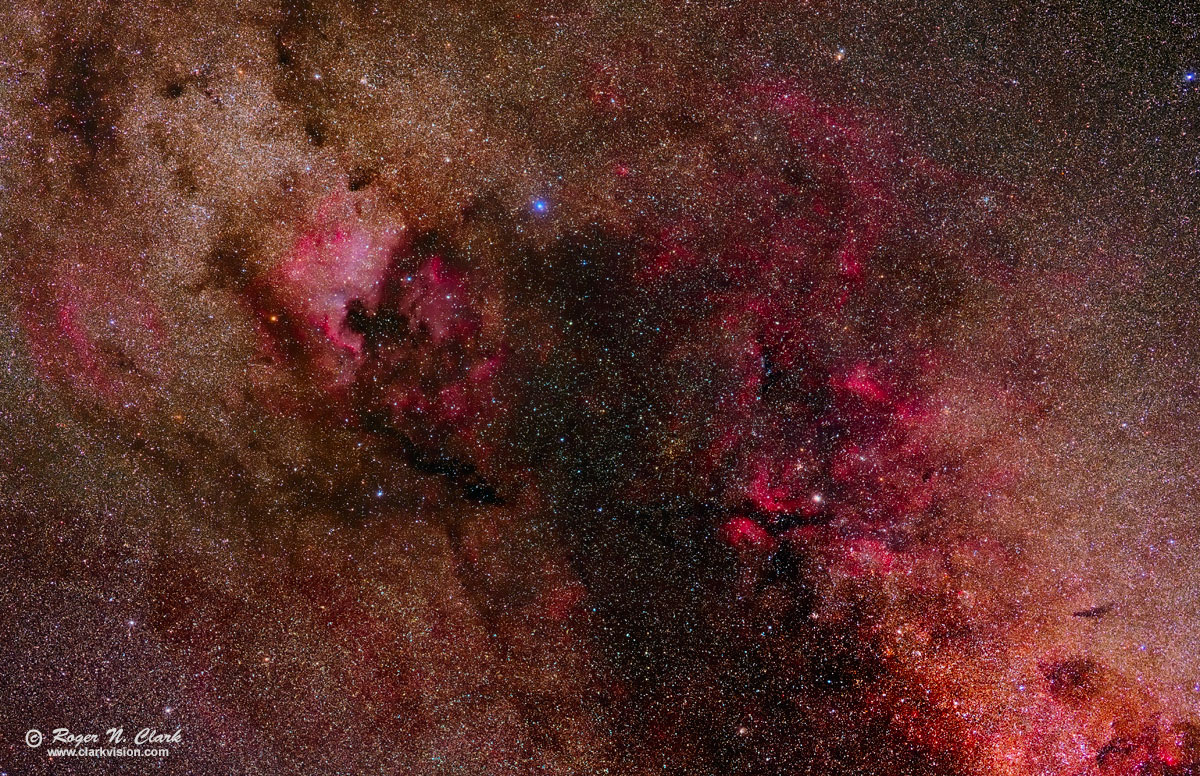
Similar to colors of the Milky Way, blue spiral arms of galaxies are rarely the real colors. Usually, the blue spiral arms are processing artifacts from incorrect subtraction of light pollution and airglow, resulting Variable Color Balance/Mangled Color (Figure 10a). A more natural color balance of a spiral galaxy is seen in Figure 10b.
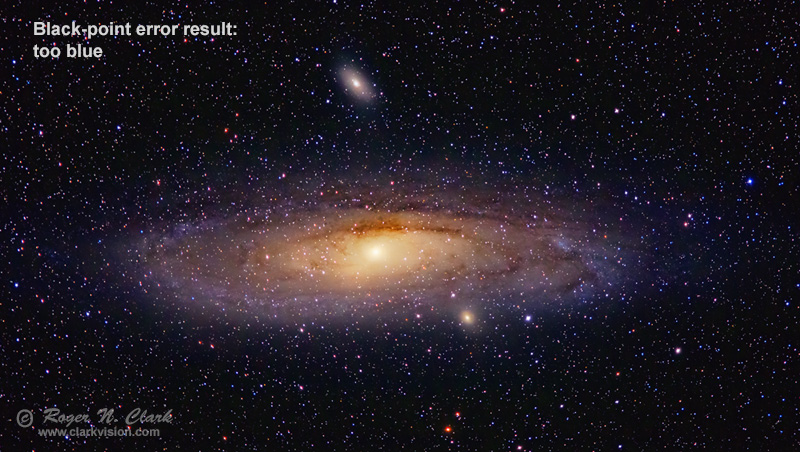
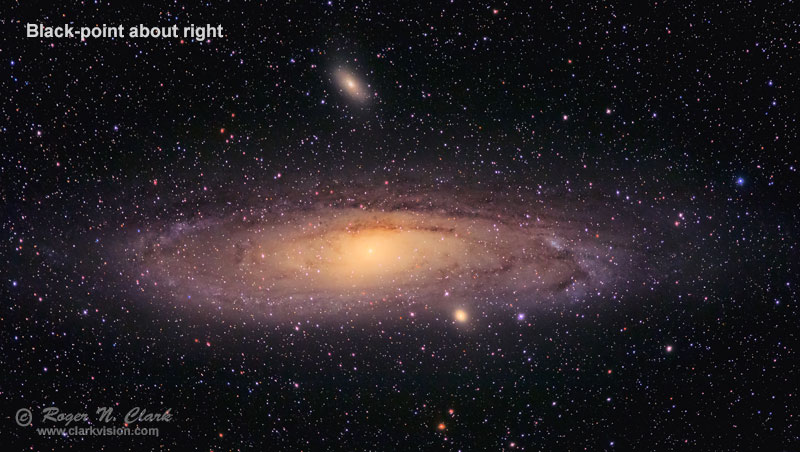
Natural color starts with stock digital cameras set to daylight white balance, or daylight white balance film. Then subtract light pollution and airglow to taste. Usually nightscape images are more interesting with airglow, which adds uniqueness to an image, much like clouds in a daytime landscape scene. Deep sky images of star clusters, nebulae and galaxies usually remove airglow and light pollution to show them like they would appear with no atmosphere. Avoid any processing steps that align histogram peaks in a photo editor. For example, follow my guides, including the following.
Nightscape and Astrophotography Image Processing Basic Work Flow.
Astrophotography Image Processing with Images Made in Moderate Light Pollution.
Astrophotography Image Processing: Advanced Image Stretching with the rnc-color-stretch Algorithm. (Free open source software).
The Night Photography Series:
| Home | Galleries | Articles | Reviews | Best Gear | Science | New | About | Contact |
http://clarkvision.com/articles/blue-lions-on-the-serengeti-and-natural-colors-of-the-night-sky
First Published June 03, 2021
Last updated August 18, 2021.